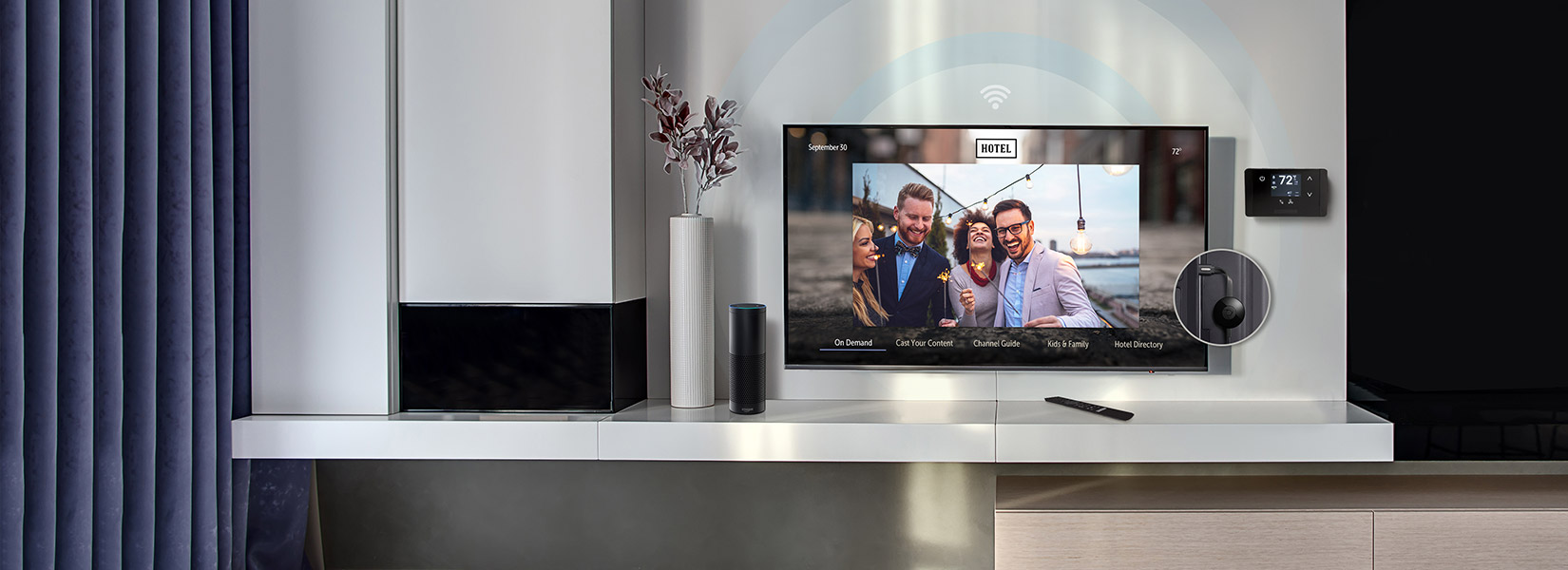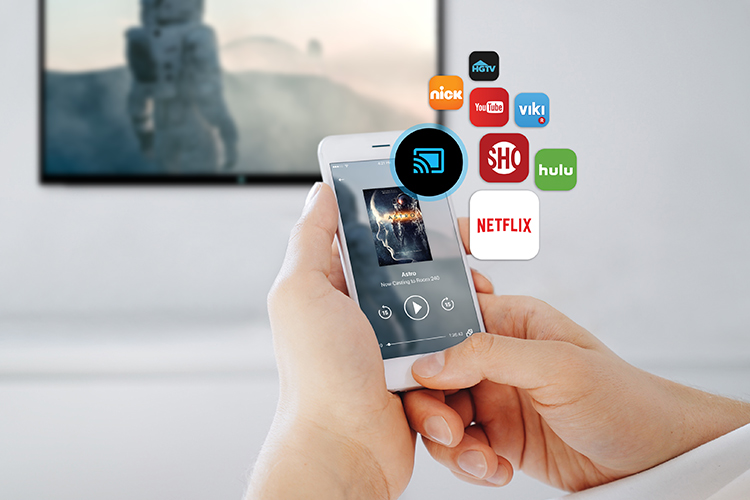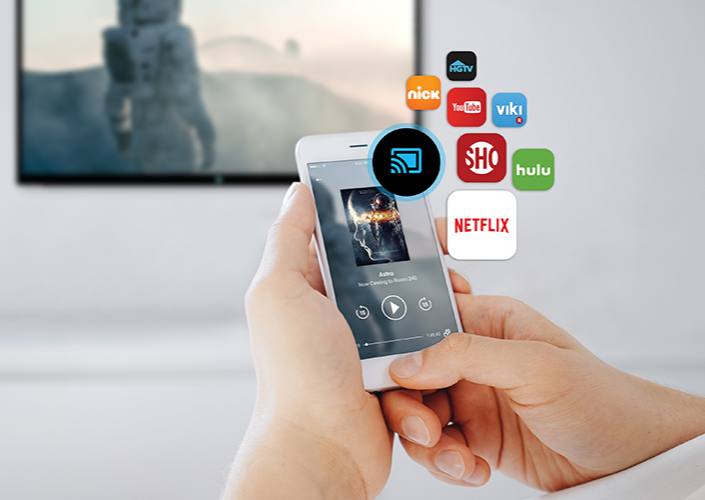Look To Your Living Room — Hospitality’s 2019 In-Room Technology is Already In Most Homes
[Jan. 20, 2019] Ahmad Ouri, Chief Executive Officer at SONIFI Solutions, shares his thoughts on the state of hospitality’s in-room technology with Hotel Executive.
Multi-Device Is a Must
In the year ahead, hoteliers should research and vet in-room platforms that support multiple touchpoints and devices that can work together – even to accomplish the same tasks. It is a common occurrence for a guest to use a remote or mobile device to browse and select a movie/channel to watch on the hotel’s in-room TV, but then put that device aside and later wish to have other options to adjust volume or set a sleep timer using voice commands – just like at home. Hoteliers may think that seems unnecessary, but it’s time to recognize that we are in an increasingly “technologically comfortable” age. The new expectation for guests is to have their preferred choices of technology available.
Our lives today use multiple technologies in tandem and people move between technologies as part of their regular routines. For example, consider how travelers make their travel plans – to search for stats or message other fans. In addition, households today average TVs, computers, tablets etc.).Users continually make choices about the best way to leverage technology in every situation.
Guests are not holding hospitality to an extreme standard; people are simply accustomed to having choice of service in everyday life. We can pay with a credit card, a debit card, a phone tap or maybe even still use cash or a check in a few places. We can adjust the temperature in our homes using the thermostat or a voice assistant or an app. Hoteliers need to accept multiple technology use is not a trend or something only a few users are doing. It’s time to build in-room technology that offer guests several touchpoints and a seamless experience between these options.

Working with providers that offer flexible and expandable connected technology is the best way to surprise and delight your guests – while future-proofing your investment. The right product and provider can integrate the technology to work together and maintain compatibility with other systems and components already in the room. This lets you reap the benefits of tagging on to existing in-room systems – such as using the in-room TV to adjust the thermostat or contact the front desk.
Having flexibility and breadth is crucial because guest preferences are individual. One guest orders pizza from a smartphone app while another selects a meal from a room service menu on the TV. Guest preferences also change over time. It used to be a ‘must’ to put flight schedules on the TV screen but now guests prefer to use their mobile devices for that as they are also checking in online, arranging transport and so forth. Things will change, so it is important to choose your integration partners wisely. Experienced providers with integration-capable platforms and partnerships in multiple top technologies offer an advantage for longevity of your investment.
Keep tabs on the consumer market
Hospitality technology has been lagging behind the home space. Hotels are working to adopt the same technologies found in homes and trying to create a similar connected experience for their guests. Consumer adoption for smart home devices continues to grow, which means guests’ expectations to find these services in their home-away-from-home will continue to grow as well.
Let’s look at the more common integrations in the home market and examine how they have entered hospitality. Device streaming and on demand video viewing is all but ubiquitous now in the home market. It is estimated that Google has sold more than 65 million Chromecasts and that’s just one streaming technology product. Statistics prove these devices are being used regularly. In US broadband households, 60% of TV viewing is nonlinear programming and nearly half of US consumers stream at least once weekly
Guests have the expectation that they can watch TV at a hotel the same way they do at home. If you go on travel review sites, you will see positive comments for hotels with in-room streaming and negative comments when guests have brought their own streaming devices and they don’t work on a hotel TV and wireless network. Most guests don’t have any perception that it could actually be difficult for a hotel to offer what to them seems commonplace.
The reality is that streaming in hotels is more complicated. Properties must deal with privacy, security, and network concerns that are very different from the home market. But the guest expectation exists and is growing, so we see hospitality adoption growing likewise. SONIFI’s streaming product, STAYCAST™ powered by Google Chromecast, is now in 125,000 rooms and the devices are seeing 4x the usage from when we introduced the product just a few years ago. Streaming is not a fad or a trend – it is a reality.

Voice assistants are another consumer trend quickly moving to commonplace. One in four US internet users currently own a smart home device. In homes, people use voice assistants to get more information about their day—news, weather, schedules as well as shopping. They set timers as well as ask questions. Voice assistants also control media, environmental controls, and security features. Voice assistants are already doing similar things in hospitality.
A unique asset to using voice assistants in hospitality is the guest perception. It feels as if they always have a knowledgeable hotel representative ready to help. A room compendium can list the hours of an onsite restaurant but a friendly voice telling the guest the hours and offering to make a reservation or list featured chef favorites – that’s a welcoming invitation. It’s a conversation where your brand listened and immediately met a need. Your brand maintains a relational presence in the room. Voice integration makes it easy to convert inquiries into revenue by making spa appointments, ordering show tickets, etc. It also offers immediate service recovery options to say I am sorry, let me take care of it, or even offer a comp – a free drink, late checkout. It will be exciting to see Voice evolve and expand in 2019.
Environmental controls are also in the now and coming realm of hospitality. More than 40 million homes will have a smart thermostat by 2020.That is next year and this means the knowledge and ability to adjust a traditional thermostat is likely already declining – so app, voice, or onscreen connections will be helpful. The biggest advantage to connected controls is energy management. New technology allows remote or automated management of in-room energy consumption. Occupancy sensors can turn off the lights, the TVs, and adjust the temperature when guests are not in their rooms for extended periods of time. This saves resources. Hotel system integrations can change in-room settings at checkout or upon check in. It would be nice to turn a lamp on in the room when a guest checks in – the possibilities are endless. Technology should produce guest benefits and operational efficiencies.
Bring it all Together
The in-room technology ecosystems are more intertwined all the time. Be careful not to choose bits and pieces that may not have capacity to evolve or expand. Look for platforms and providers that integrate well. There’s a spirit of collaboration happening with technology in the industry. Good partners accomplish better faster. A company well-versed in connected technology should also be able to provide system data so you can be confident everything is working before a guest walks in the room. They should also offer guest usage data, so you can see how much your technology investment is being used and make wise decisions on future additions. Choosing a company with a cooperative attitude that keeps your needs in mind makes a big difference. It is worth having integration and road map discussions in addition to product demos.
Remember you are building an ecosystem where technologies must coexist. Invest first in foundational pieces like the Wi-Fi network and a versatile API. You can follow by adding pieces over time while still providing a seamless guest experience. Connected technology is here and it needs to be part of a hotel’s go-forward strategy.
Read the full story here.

